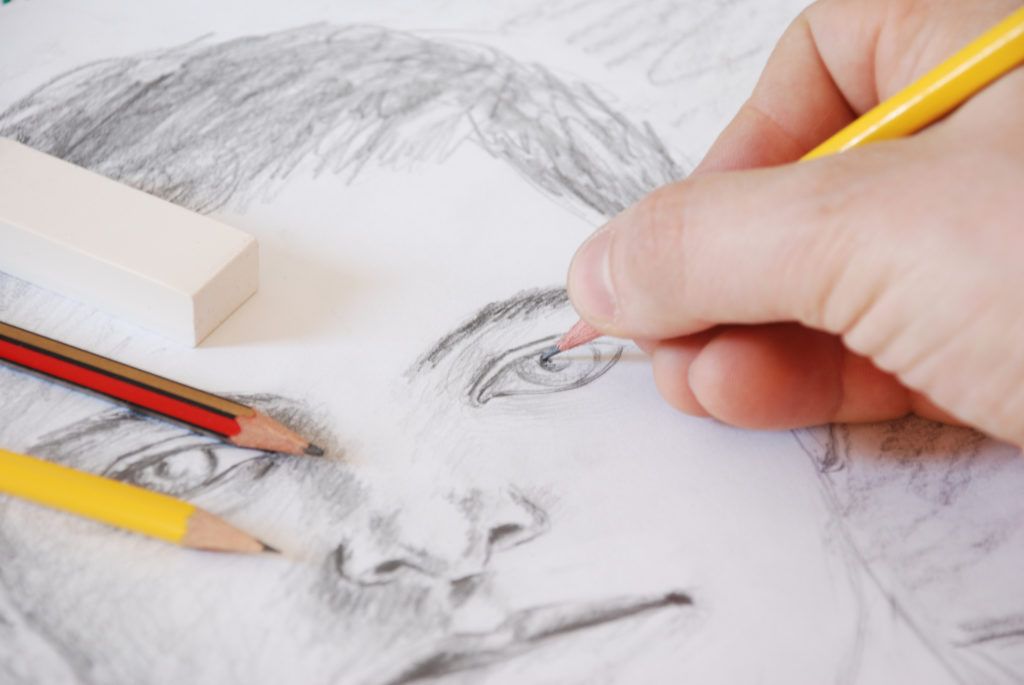Why Having a Dedicated Drawing Practice Is Key for All Artists
Why Having a Dedicated Drawing Practice Is Key for All Artists

The Case for Drawing
When I teach painting classes, I always ask students to raise a hand if they would have signed up for my class if they thought it was a drawing class. You can imagine what happens — crickets, and not a single raised hand. I then give the students charcoal and newsprint, and we draw for 30 minutes. When we move on to painting, they feel more confident and more prepared. I think they even make better art that day.
No matter how advanced you are in your art practice, or what form your creativity takes, your work will improve if you draw. Drawing is everything. Whether you work in an art journal, paint, decorate cakes or make jewelry, being able to draw simply makes your work better.
Everyone wants to experience the sensual, ecstatic nature of painting. But no one wants the bare-boned austerity of drawing, especially beginners. Painting is more glamorous. It is easy to disguise a multitude of sins with paint. It is nearly impossible to do so when you take away color and texture and are left with just line and shadow. Most people don’t want to be told to draw more. It’s similar to having a loved one tell you to exercise or meditate more. But hear me out. I promise you’ll thank me later.
Related: 11 Artists on the Sketchbooks and Materials That Keep Them Creative
Why Drawing is Essential
Having a steady drawing practice creates proficiency, as when author, painter and writing teacher Natalie Goldberg asks her students to write nonstop for 20 minutes. It isn’t the writing that gets honed; it is the practice of writing. Drawing practice offers this gift as well.
We sketch ideas to explore them and figure out what we want to do next. One of the greatest benefits of drawing is the freedom it offers to explore and play in a low-stakes setting. Inexpensive materials mean no pressure.
Drawing liberates us from the fear of wasting materials or failing. It can be playful and lighthearted. Even doodles count! Drawing is crystallized seeing. It is the doorway to understanding form through light. If we draw representationally, we simply capture light and shadow. If we draw abstractly, we work on building an assortment of marks.
Having a drawing practice connects our eyes with our hands. Often, we need to get the mind out of that loop. The mind likes to tell us things such as, “I can’t paint hands,” often hijacking our creativity.
Related: Hand Drawing Made Simple: Key Techniques for Confident Results

In Drawing on the Right Side of the Brain, author Betty Edwards offers an activity for overcoming this cognitive trap in a lesson involving drawing from a photograph. She encourages readers to flip the photo upside down to better see the shapes and their relationships to each other. This way, the forms are seen as just shapes, instead of a hand, arm, etc.
I highly recommend that you enroll in a drawing class, no matter how proficient you think you are. I take a drawing class every year or two. It realigns me, and makes me a better artist. To that end, below are two quick and easy ways to enhance your drawing practice.
Drawing Practice | Activity 1
Sit in front of a mirror every day for 30 minutes and do a self-portrait using compressed charcoal and a large newsprint pad. Start with several quick one- to two-minute drawings of your face as a warm-up, and then progress to a 20-minute detailed self-portrait.
Assess your image as a collection of shapes. Notice how the shapes change when you move. Look for different proportions within your image, and identify the negative spaces. Hold the charcoal at a low angle to the paper, almost drawing on the side of the charcoal.
Self-portraits offer us the gift of connecting with ourselves and checking in with our emotional state. Life can be so full, busy and distracting that we can lose touch wit the person staring back at us.

Comments
Post a Comment